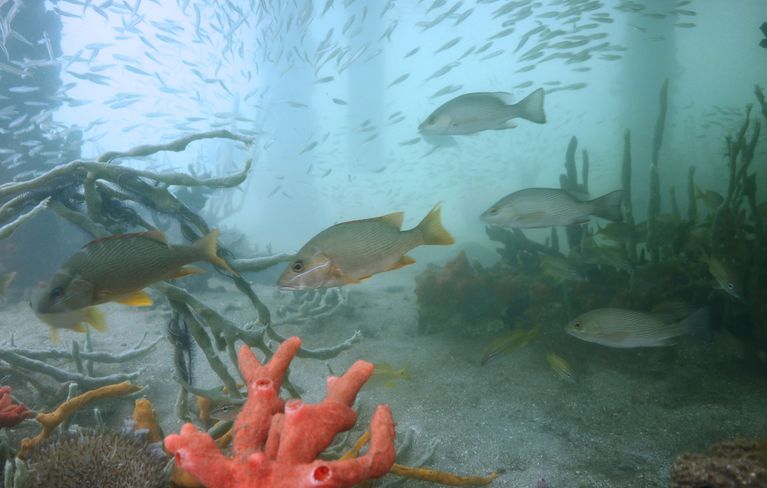
Marine and Polar Life
About Topic 6
Mission:
Topic 6 will provide the scientific foundation for a sustainable management of the ocean by determining the functions and dynamics of marine ecosystems and assessing options to remedy and mitigate human impacts.
Vision:
About 70 percent of the Earth is covered by oceans. But only 13 percent of this huge area can be considered pristine. Most marine and polar habitats are suffering as a result of shipping, commercial fishing, pollution, global warming, and rising levels of CO2. All of this has a serious impact on biodiversity and on ecosystems, including the services they provide. Normally, the oceans absorb large quantities of the carbon dioxide generated by human activity, thereby reducing the concentration of CO2 in the atmosphere.
We want to investigate how marine biodiversity is responding to this pressure through adaptation, habitat shift, or changes in the composition of biotic communities. We will analyze the impact that these changes have on food webs, on the uptake and release of carbon, and on other fundamental cycles. Examples of subjects we aim to explore include the extent to which marine ecosystems are able to continue storing sufficient quantities of CO2 in the oceans, especially under the influence of climate change, and what the long-term impacts of deep-sea mining are on ecosystem functions and microbial communities on the seafloor.
Our research into marine and polar biodiversity draws on a range of sources, such as data collected on the Polarstern research icebreaker during the international MOSAiC expedition in the Arctic. The Helmholtz Institute for Functional Marine Biodiversity at the University of Oldenburg (HIFMB) will develop scientific grounds for marine protection and management measures by analyzing the roles and functions of biodiversity in ocean ecosystems. The Alfred Wegener Institute, Helmholtz Centre for Polar and Marine Research (AWI), and the GEOMAR Helmholtz Centre for Ocean Research Kiel will also pool their expertise in biology and biogeochemistry to describe how the entire Atlantic Ocean is responding to and coping with changes in the global climate for the first time. We will contribute these findings to international expert bodies, such as the Intergovernmental Panel on Climate Change (IPCC) and the Intergovernmental Science-Policy Platform on Biodiversity and Ecosystem Services (IPBES).
Structure
Graphic Representation of Subtopics
Subtopics in detail
Links to CARFS/CCA
Earth System Modeling (ESM)
DAM & HI-CAM
MOSES
Digital Earth
Arches
Extremes
Impressions
Icefish breeding colony in the Antarctic © PS124 OFOBS Team / AWI
Mesocosms of the KOSMOS project near Peru © Ulf Riebesell / GEOMAR (CC BY 4.0)
Mesocosms of the KOSMOS project near Hawai'i © David Pence / University of Hawai'i (CC BY 4.0)
Munitions in the Baltic Sea © Jens Greinert / GEOMAR (CC BY 4.0)
Cold water corals in a Norwegian reef © JAGO-Team / GEOMAR (CC BY 4.0)
RV Polarstern in the Arctic
Plastic at Henne beach, Denmark © Mark Lenz / GEOMAR (CC BY 4.0)
Biomineralisation laboratory at GEOMAR © Jan Steffen / GEOMAR (CC BY 4.0)
Manganese nodules in the Clarion Clipperton zone (CCZ) © ROV KIEL 6000 / GEOMAR (CC BY 4.0)
Zostera marina (seagrass) in the Kiel benthocosm experiments © Christian Pansch / GEOMAR (CC BY 4.0)
Plankton community of the western Baltic Sea © Annegret Stuhr / GEOMAR (CC BY 4.0)
Cold water coral reef through the window of JAGO © JAGO-TEAM / GEOMAR (CC BY 4.0)